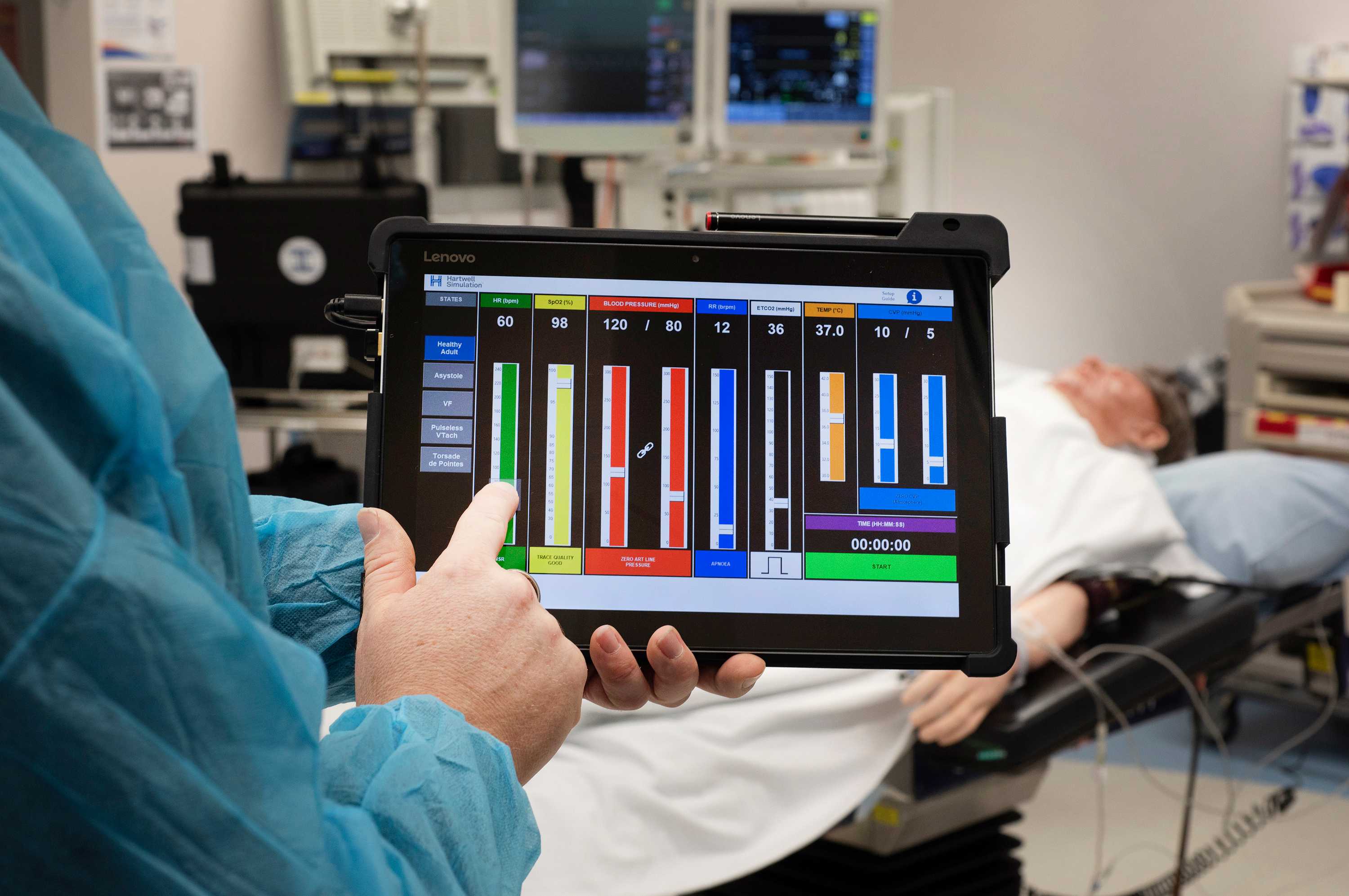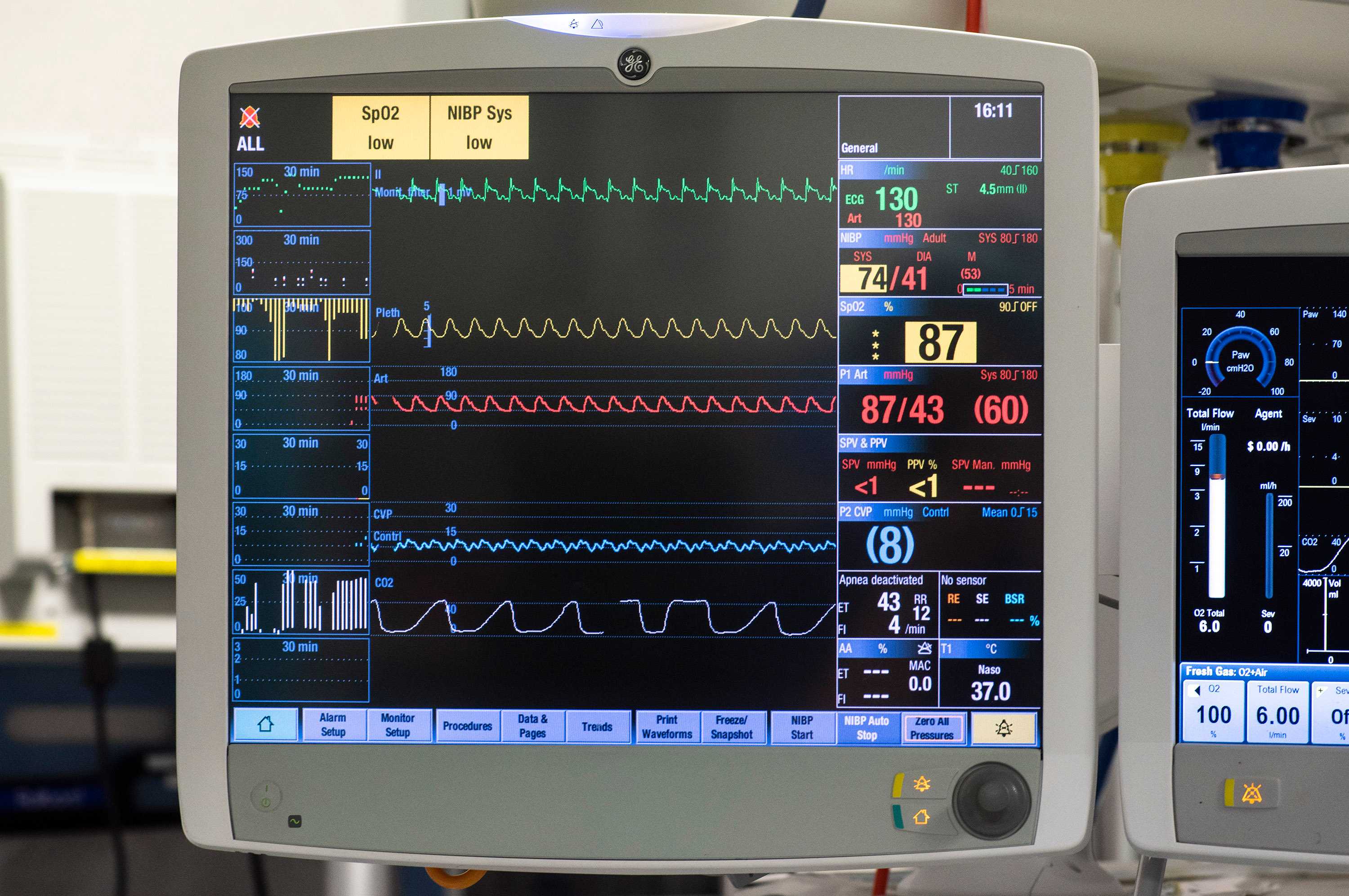Hartwell Simulation
Simulation training is a vital component of jobs where high impact decisions are made in stressful situations.

Simulation training is a vital component of jobs where high impact decisions are made in stressful situations. For that training to be realistic, the simulations must be as close as possible to the actual work environment. The Hartwell Simulation System allows people to run simulations, test their systems, test their environment, work on their teamwork and their crisis management, in their own clinical environment, with their own equipment.
Medical staff have traditionally relied on expensive, high tech computerised manikins which don’t necessarily accurately mirror the systems they normally work in.
Christchurch anaesthetist Dr Dan Hartwell rose to the challenge in 2012 and set out to develop a cost-effective alternative to the manikins he and his colleagues were using. His goal was a training system that could be used in the clinical environment, rather than in a training setting.
“There is real value to running simulations in the clinical environment. You can get all the staff there and identify issues where hospital systems or activities within the hospital and clinical environment might risk patient or staff safety. We can identify these and rectify them before they impact on patients,” Dan says.
“This takes simulation beyond education and makes it a quality, safety and real-time training activity that is an essential component to providing health care.”
He started out with a line-up of calibration machines combined with a fake patient or a basic manikin. Michael Sheedy of the Medical Physics and Bioengineering Department at Christchurch Hospital became involved and development of the concept continued, including software that would enable the calibration machines to be centrally controlled from a tablet computer. This wireless solution was well received by users as it was extremely portable and enabled users to plug in to the equipment they would normally use – creating a very realistic simulation.
“So not only were we moving away from a hugely expensive manikin with features that weren’t required or weren’t necessarily ideal – but we now had access to a system where we could control the monitors and have our own choice of equipment to run our simulations,” Dan says.

The next development was addition of a module incorporating a device to generate carbon dioxide and imitate different human breathing patterns, which would then show up on the normal theatre monitors. There was nothing on the market at that time that could perform this function within the realms of most hospital budgets, so the team was heading into new territory.
By now the simulation equipment had been enhanced to incorporate a graphical user interface on the wireless tablet so that the users could easily control the monitor using sliders.
“I could give this to a colleague, and within two minutes they would be running a simulation scenario, with no training required,” Dan says.
Dan and Michael credit Via Innovations (the Te Whatu Ora Waitaha innovation team) for the support they received in the development of their innovation and linking them to local companies that could produce beta test variants for the devices – which have now been in testing in Australian and New Zealand hospitals for some years.
“We think there is value for this in every single hospital. There are other more expensive systems on the market but our system means clinicians can use their own monitors. There is clear demand for this product from people who know what it can do.”
Next stop for the project was an introduction to the New Zealand Health Innovation Hub, which resulted in the project spinning off into a new company. The company is now seeking investors so that it can refine the technology and create a commercial version that can be sold.
Dan says the price of what is now known as the Hartwell Simulator will compare very favourably with other options and should put it within the reach of hospitals, as well as rescue helicopter and ambulance services. Other simulators that don’t offer the same functionality and are not as intuitive to use can cost $130,000 or more.
“Our aim as innovators was to say we’ve done this, we think it’s really good and that others will benefit from it. Simulation is absolutely essential for patient safety and for training staff. Removing barriers to that is really important. I would love one of these to be in every hospital.”
